The best metal to be used for photoemission is
Patassium
Sodium
Cesium
Lithium
The correct Answer is:C
To determine the best metal for photoemission, we need to consider the properties of metals in relation to their ability to emit electrons when exposed to light. Here’s a step-by-step solution:
Step 1: Understand Photoemission
Photoemission is the phenomenon where electrons are emitted from a material (usually a metal) when it absorbs light (photons). The energy of the incoming photons must be sufficient to overcome the work function of the metal, which is the minimum energy needed to release an electron.
Hint: Photoemission occurs when light energy is absorbed by a metal, causing electron emission.
Step 2: Consider Metallic Character
The metallic character of a metal is related to its ability to lose electrons easily. Metals with a higher metallic character can emit electrons more readily when exposed to light. This means that the best metal for photoemission should have a high tendency to donate electrons.
Hint: The ease of electron donation is key to determining the best metal for photoemission.
Step 3: Analyze Metals in the Periodic Table
As we move down a group in the periodic table, the metallic character increases. This is because the outer electrons are further from the nucleus and are held less tightly, making it easier for them to be emitted.
Hint: Look for metals lower in the periodic table for better metallic character.
Step 4: Identify the Best Metal
Among the alkali metals, cesium (Cs) is located at the bottom of Group 1. It has the highest metallic character and requires the least energy to eject an electron, making it the best candidate for photoemission.
Hint: Cesium is the alkali metal with the highest tendency to lose electrons.
Step 5: Conclusion
Based on the analysis, cesium is identified as the best metal for photoemission due to its low work function and high metallic character.
Final Answer: The best metal to be used for photoemission is cesium (Cs).
---
Photoemission is the phenomenon where electrons are emitted from a material (usually a metal) when it absorbs light (photons). The energy of the incoming photons must be sufficient to overcome the work function of the metal, which is the minimum energy needed to release an electron.
The metallic character of a metal is related to its ability to lose electrons easily. Metals with a higher metallic character can emit electrons more readily when exposed to light. This means that the best metal for photoemission should have a high tendency to donate electrons.
As we move down a group in the periodic table, the metallic character increases. This is because the outer electrons are further from the nucleus and are held less tightly, making it easier for them to be emitted.
Among the alkali metals, cesium (Cs) is located at the bottom of Group 1. It has the highest metallic character and requires the least energy to eject an electron, making it the best candidate for photoemission.
Based on the analysis, cesium is identified as the best metal for photoemission due to its low work function and high metallic character.
Topper's Solved these Questions
- DUAL NATURE OF RADIATION AND MATTERBOOK - NARAYNACHAPTER - DUAL NATURE OF RADIATION AND MATTEREXERCISE - EXERCISE - 1 (C.W)
40 Videos
- DUAL NATURE OF RADIATION AND MATTERBOOK - NARAYNACHAPTER - DUAL NATURE OF RADIATION AND MATTEREXERCISE - EXERCISE - 1 (H.W)
24 Videos
- DUAL NATURE OF RADIATION AND MATTERBOOK - NARAYNACHAPTER - DUAL NATURE OF RADIATION AND MATTEREXERCISE - EVALUTATE YOURSELF - 4
5 Videos
- CURRENT ELECTRICITYBOOK - NARAYNACHAPTER - CURRENT ELECTRICITYEXERCISE - Level 6
43 Videos
- DUAL NATUREBOOK - NARAYNACHAPTER - DUAL NATUREEXERCISE - LEVEL-II (H.W)
17 Videos
Similar Questions
The threshold frequencies for photoemission for three metals numbered 1,2,3 are respectively v1,v2,v3andv1>v2>v3. An incident radiation of frequency v0>v2…………………cause the photoemission from 3 but…………….cause photoemission from 1.
View SolutionWork function of potassium metal is 2.30 eV . When light of frequency 8×1014 Hz is incident on the metal surface, photoemission of electrons occurs. The stopping potential of the electrons will be equal to
View Solution
Knowledge Check
For three different metals A , B and C , photoemission is observed one by one and Ek V/s v is plotted . Which one of the following represent this curve correctly ?
A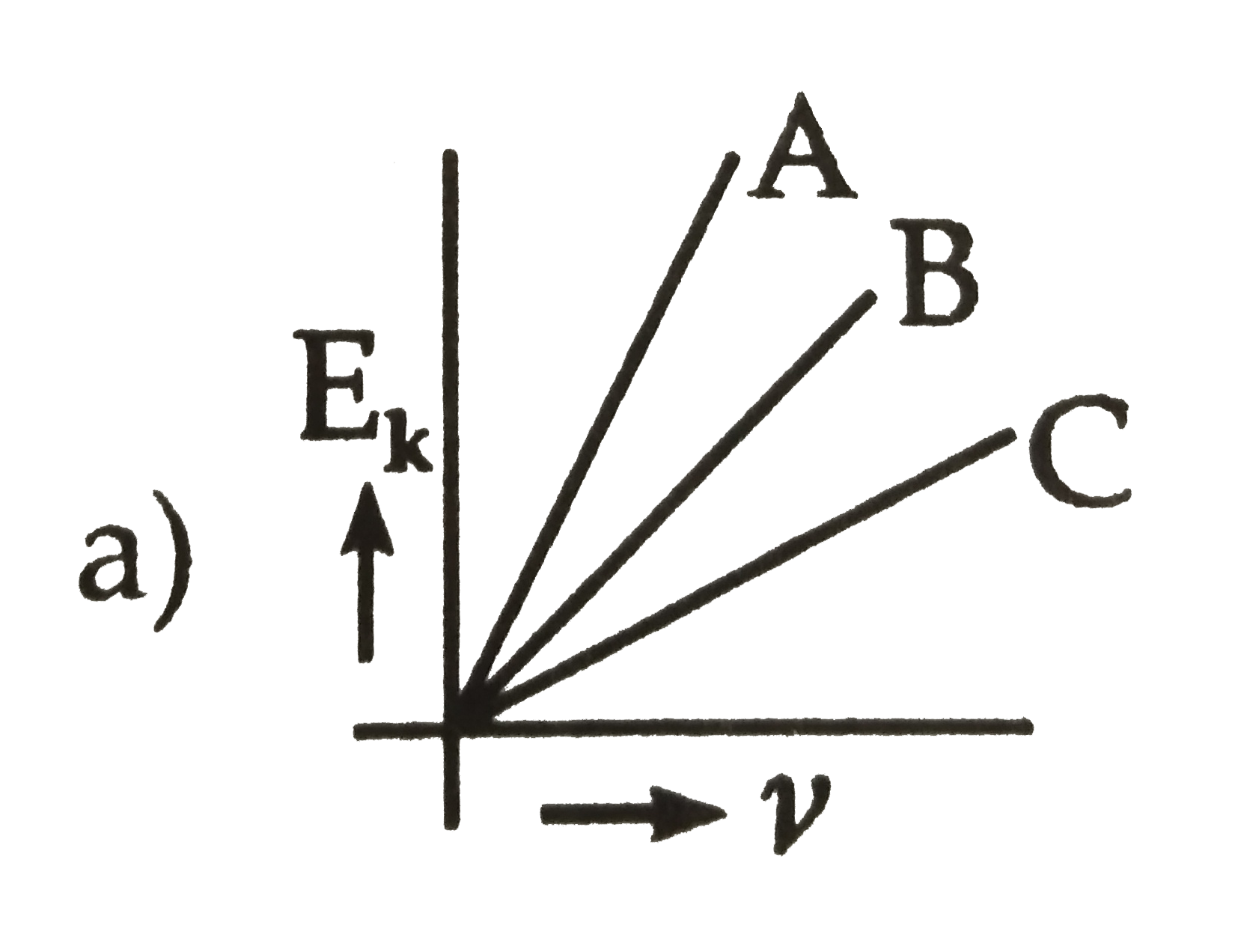 B
B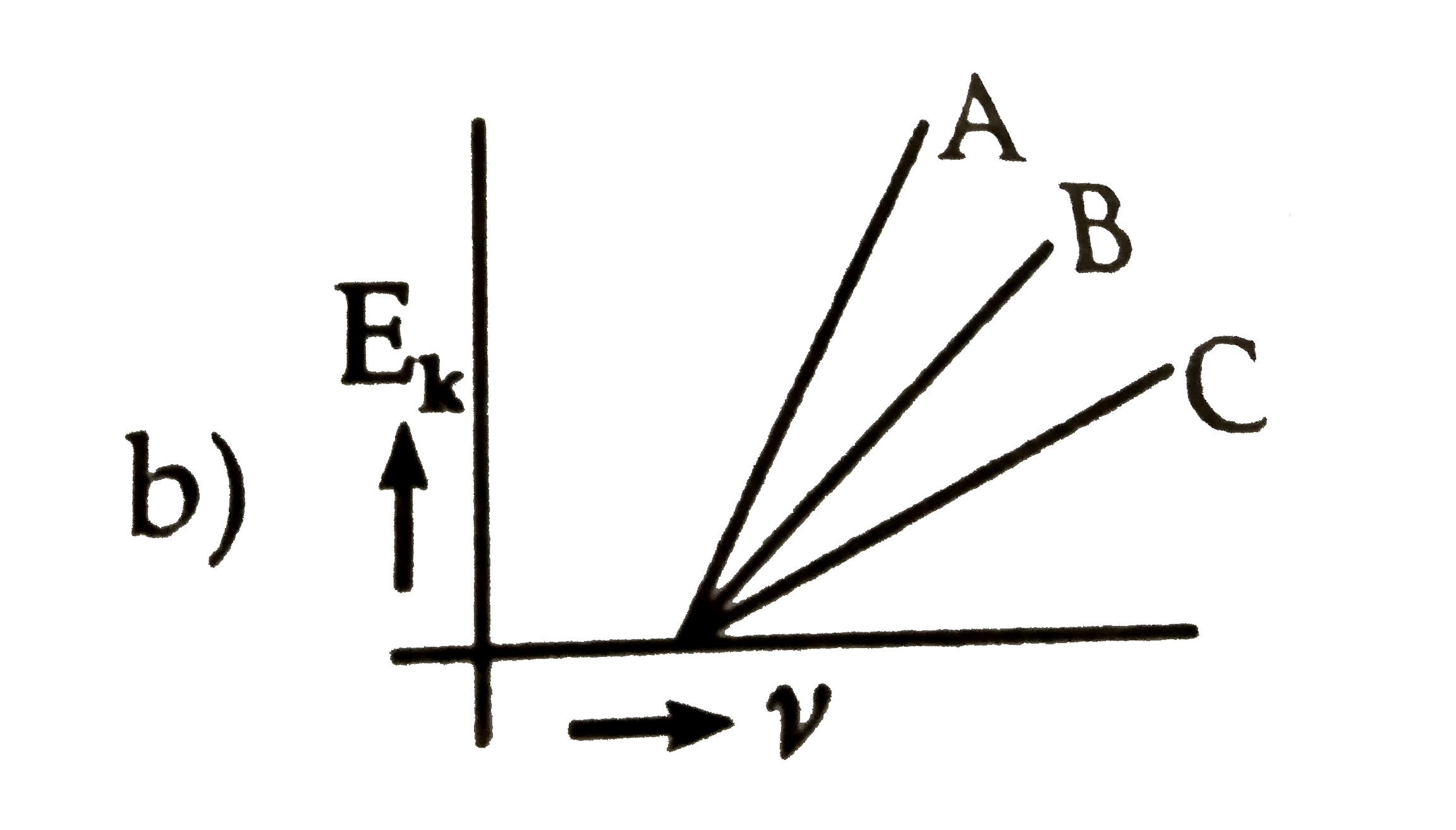 C
C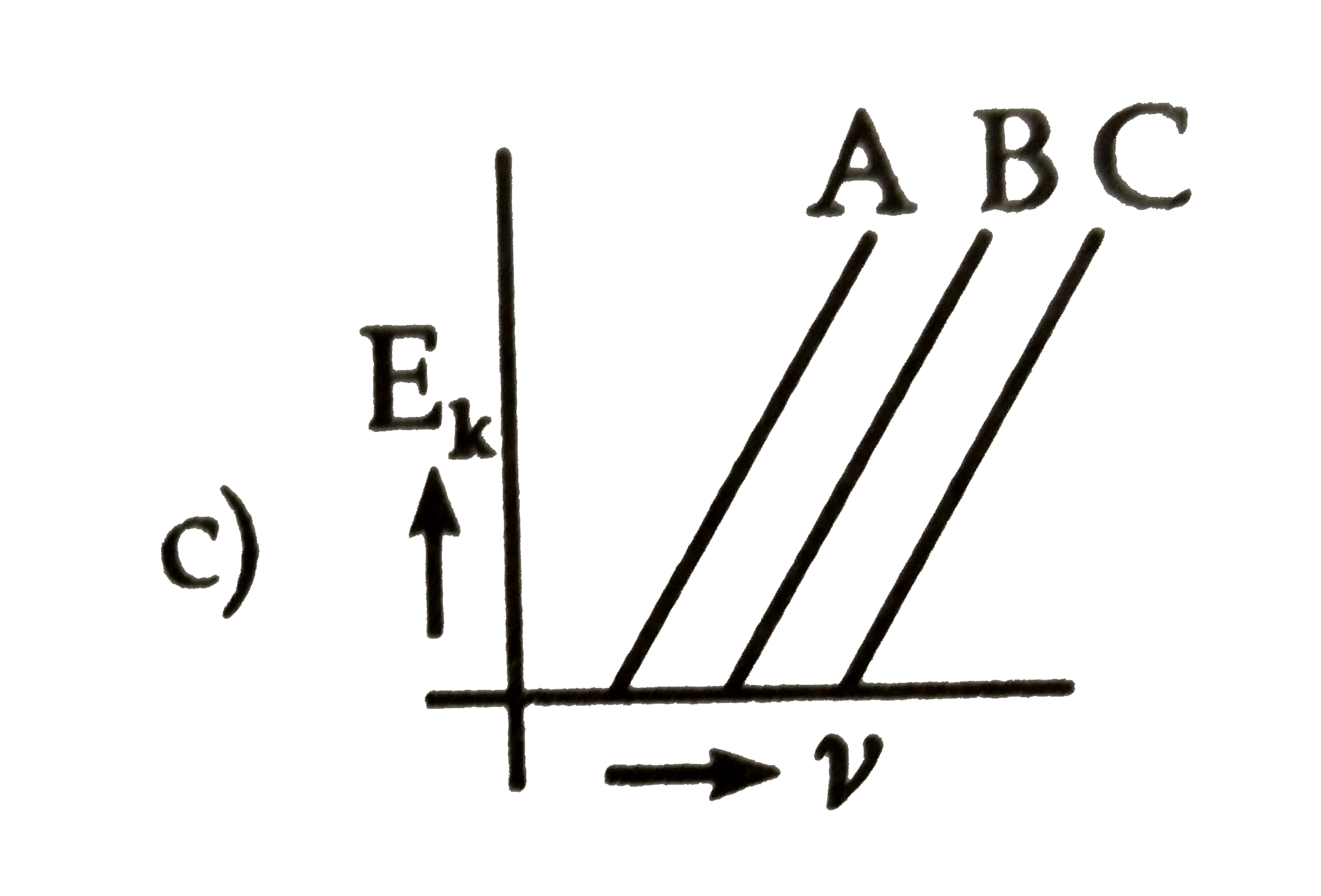 D
D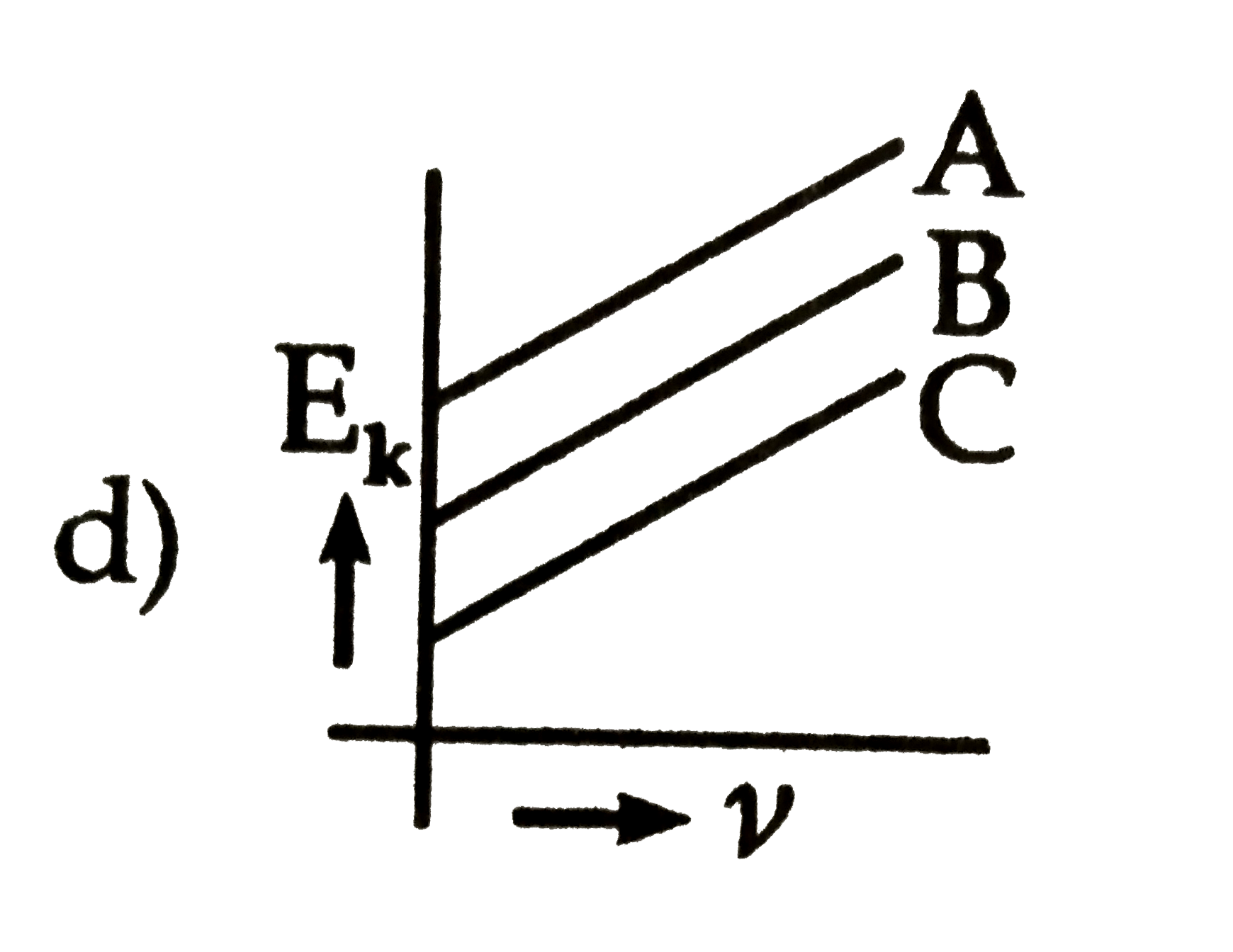
When ultraviolet rays are incident on a photosensitive metal plate, photoemission is not possible. But it is possible by the incidence of
Aviolet raysBinfrared raysCX-raysDα- raysFor three different metals A,B,C photoemission is observed one by one. The graph of maximum kinetic energy versus frequency f incident radiation are sketched as:
A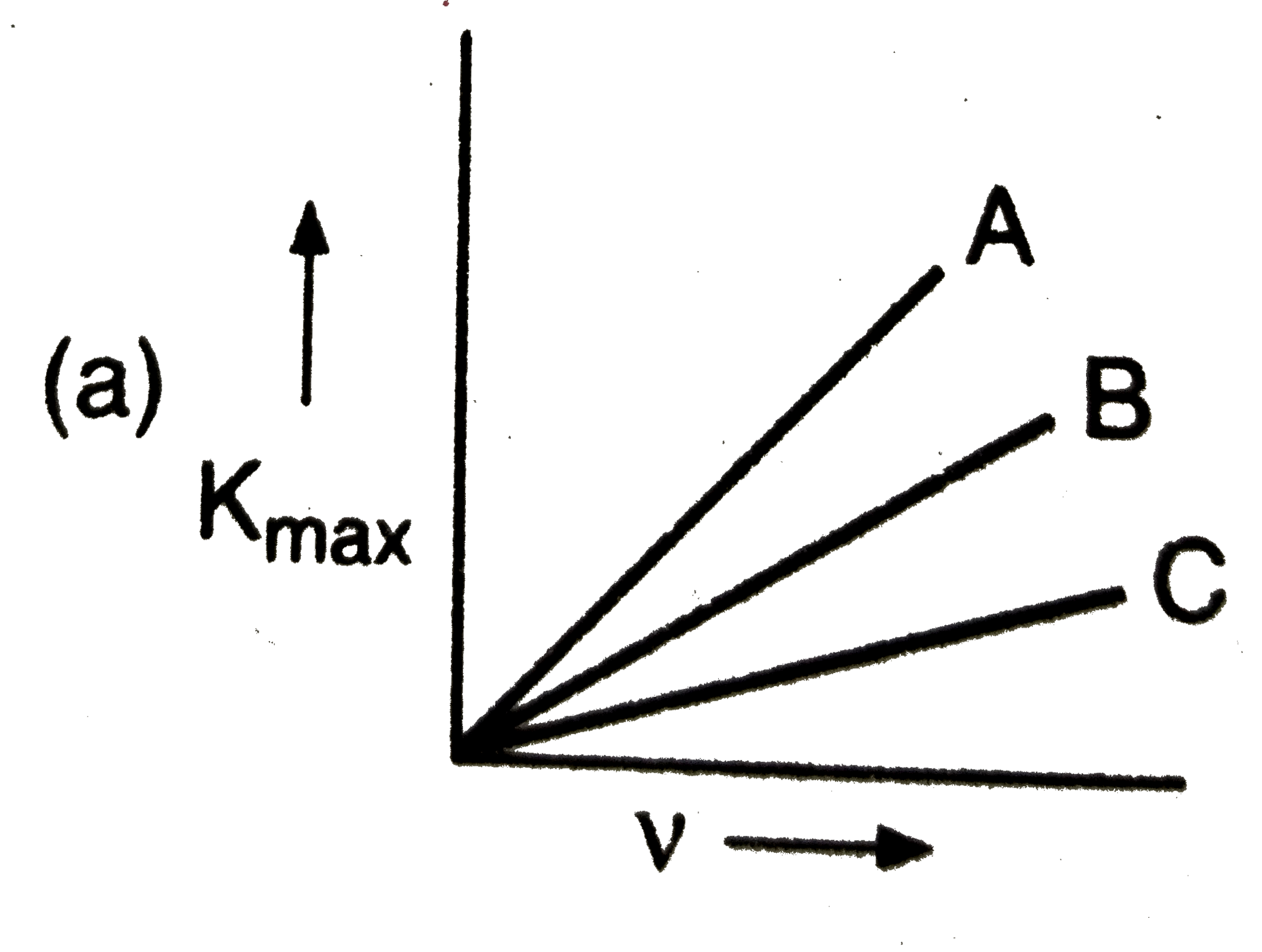 B
B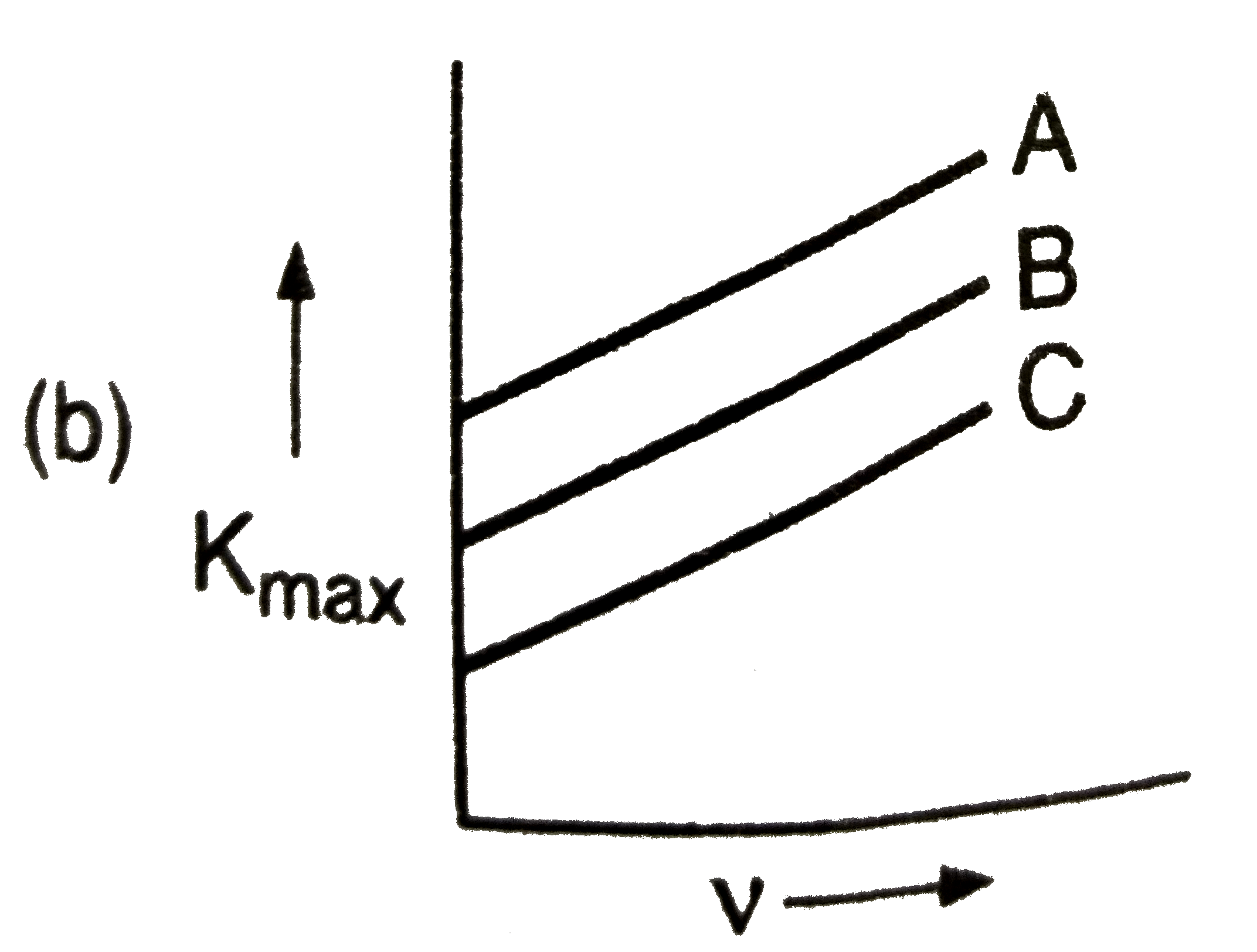 C
C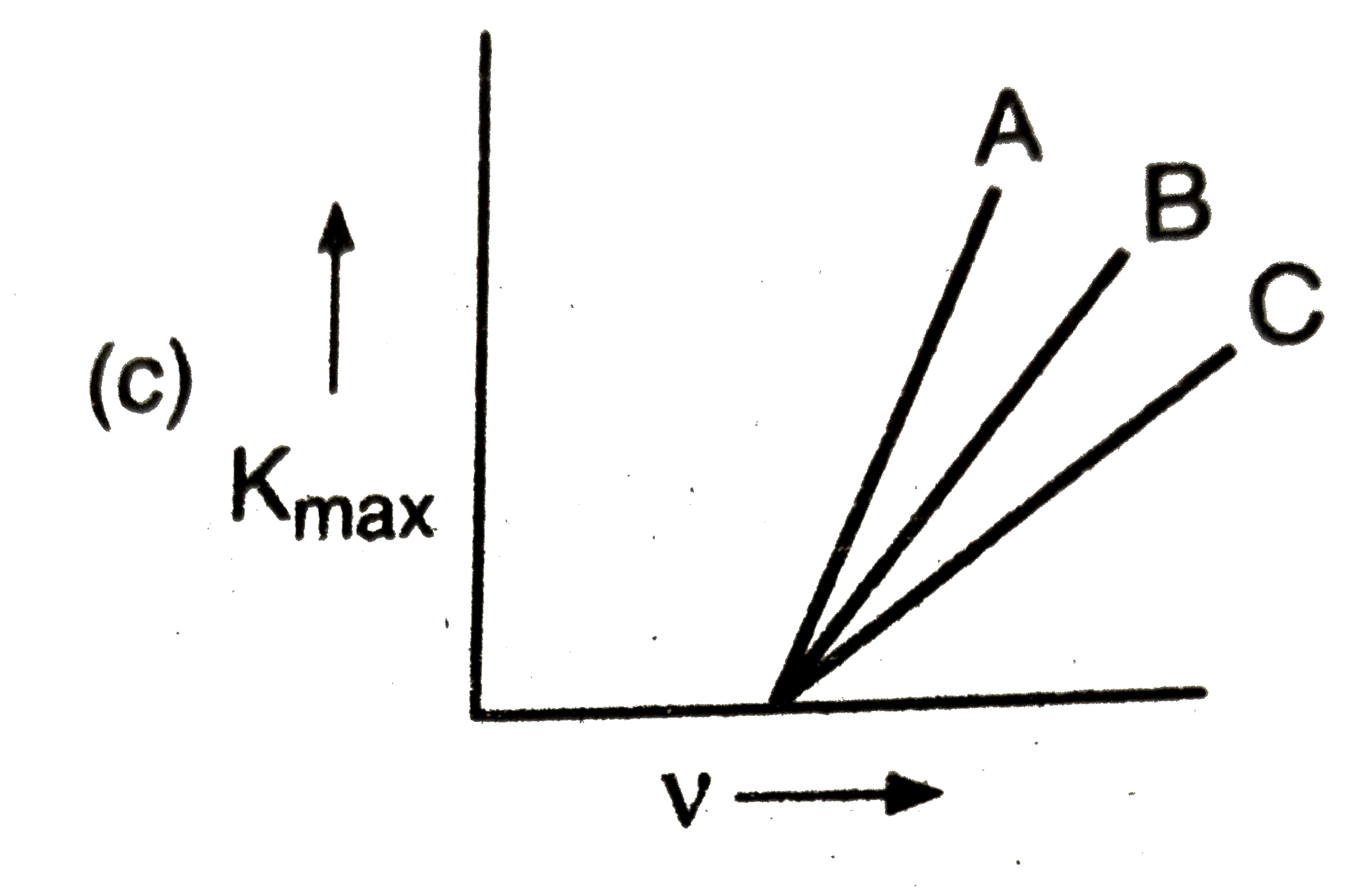 D
D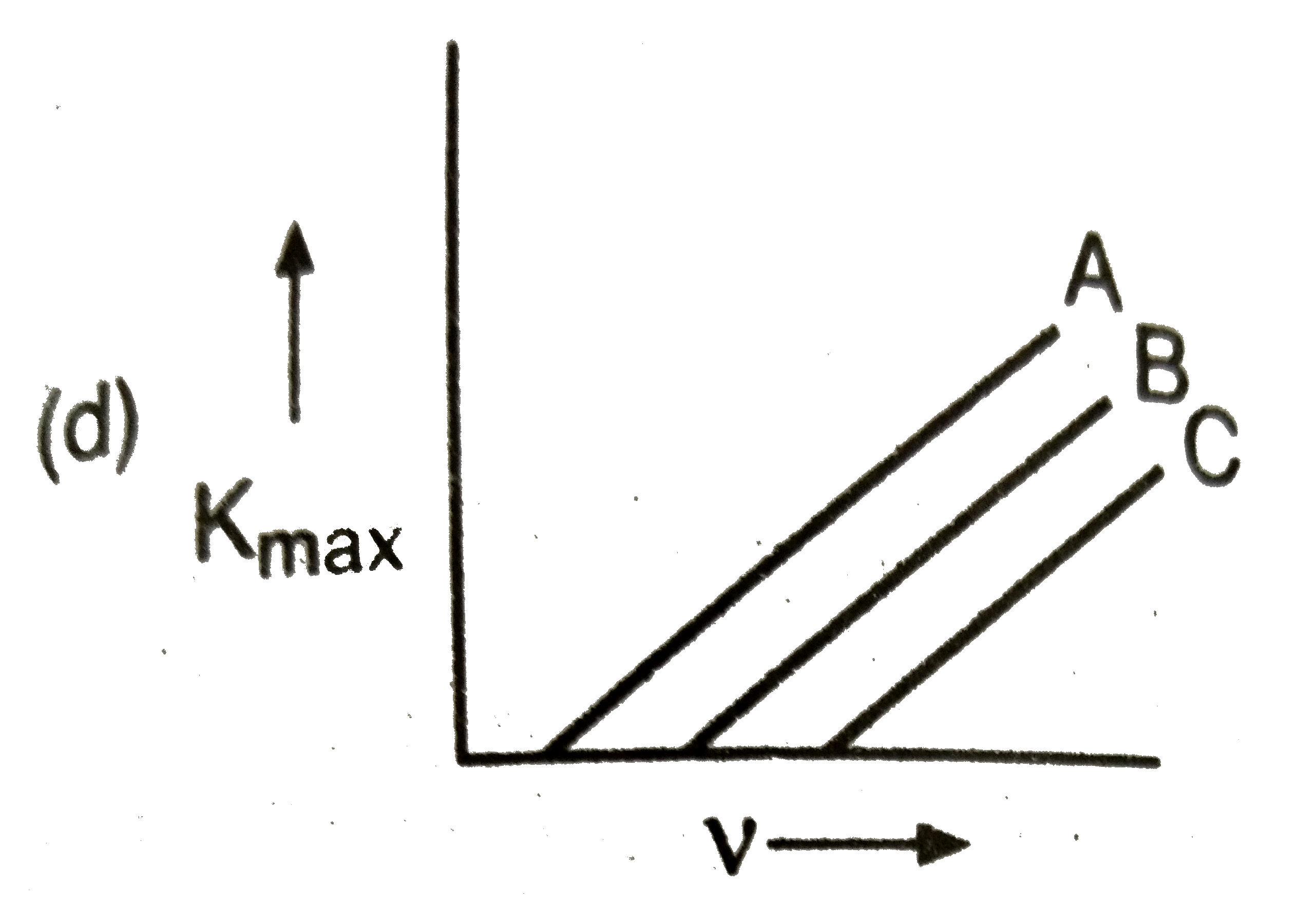
If the threshold frequency for photoemission on a metal corresponds to a wavelength 5000 Å, then its work function is
View SolutionA Photo sensitive material would emit electrons if excited by photons beyond a threshold. To overcome the threshold, one would increases -
View SolutionThe first metal used by man was
View SolutionThe first metal used by man was
View SolutionWork function of potassium metal is 2.30 eV . When light of frequency 8×1014 Hz is incident on the metal surface, photoemission of electrons occurs. The stopping potential of the electrons will be equal to
View Solution
